America’s Abandoned Insane Asylum Cemeteries
From the 19th to mid-20th century, huge asylums were constructed around the United States that acted as their own closed communities, and often included separate cemeteries. Forgotten in life, the patients sent to these mental institutions often were outcast in death. The unclaimed bodies of the deceased were buried beneath grave markers that rarely were graced with a name, usually just a number if anything at all. When this style of asylum started to close in the later part of the century and many were abandoned, the cemeteries were likewise left to decay, a final stroke of obscurity for the forgotten.
AUSTIN STATE SCHOOL FARM COLONY
Austin, Texas
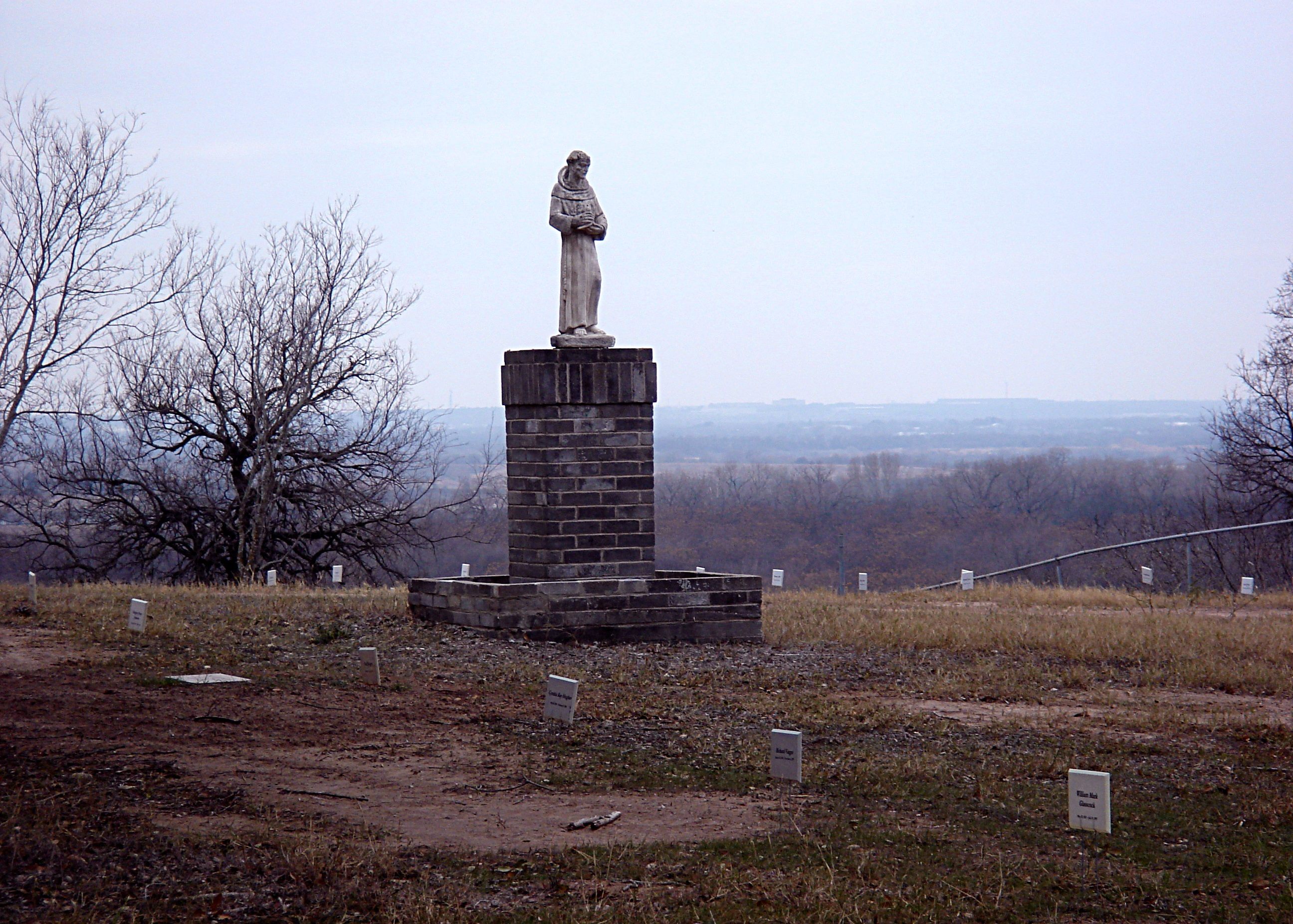 Cemetery at Austin State School Farm Colony (photograph by Andy Mistler)
Cemetery at Austin State School Farm Colony (photograph by Andy Mistler)
Opened in 1933, Austin State School Farm Colony in Texas was constructed as a 436-acre facility for mentally disabled boys. It started under the name “State Colony for the Feeble-Minded” and gradually expanded to a massive complex of 1,800 residents. This area included a cemetery on its southside, and despite the colony’s closure the graves of an estimated 3,000 people remain in the rough ground. Each was unclaimed by family or friends, lowered into the earth in a simple pine box beneath simple markers.

 Shrine on the way to the cemetery (photograph by Andreanna Moya/Flickr)
Shrine on the way to the cemetery (photograph by Andreanna Moya/Flickr)
 Austin State School Farm Colony (photograph by Andy Mistler)
Austin State School Farm Colony (photograph by Andy Mistler)
DANVERS HOSPITAL FOR THE CRIMINALLY INSANE
Danvers, Massachusetts
 Danvers State Hospital Cemetery (photograph by Rana Xavier/Flickr)
Danvers State Hospital Cemetery (photograph by Rana Xavier/Flickr)
While the Danvers Hospital for the Criminally Insane in Massachusetts that inspired both the Arkham Asylum of Batman and horror of H.P. Lovecraft with its gothic spires has been mostly demolished and converted to condos, its cemetery still lurks in the surrounding forest. Opened in 1878 as a forward-thinking institution for treating mental health, by the 1930s lobotomies and shock therapy were not uncommon. It was closed in 1992, and while its cemetery was then left to the overgrowth, the Danvers State Memorial Committee now works to keep it preserved. Hexagon-shaped concrete markers stamped with just a number remain a reminder of the place’s former identity.
 Danvers State Hospital Cemetery (photograph by Zach/Flickr)
Danvers State Hospital Cemetery (photograph by Zach/Flickr)
 Danvers State Hospital reborn as condos (photograph by John Phelan/Wikimedia)
Danvers State Hospital reborn as condos (photograph by John Phelan/Wikimedia)
ATHENS LUNATIC ASYLUM
Athens, Ohio
 Athens Lunatic Asylum cemetery (photograph by Justin Masterson/Flickr)
Athens Lunatic Asylum cemetery (photograph by Justin Masterson/Flickr)
Much of Athens Lunatic Asylum has been absorbed into Ohio University, but traces of the abandoned mental institution linger, including its cemetery. Established on 141 acres and opened in 1874, the asylum, also known as “the Ridges,” stretched over 1,000 acres by the 1950s, and at one point employed the most people in the entire state. Patients worked the grounds in the early years as therapy, while in the later years psychotropic drugs, lobotomies, and shock therapy slowed the labor down. The institution closed in 1993, and its cemetery fell into decay with the rest of the asylum, subject to vandalism and weathering. However, in recent years the cemetery with its more than 1,900 interments has seen dawning attention, with maintenance from the National Alliance on Mental Illness and even a Ridges Cemeteries Nature Walk past the low, numbered tombs.
 Epitaph on a patient tombstone (photograph by Justin Masterson/Flickr)
Epitaph on a patient tombstone (photograph by Justin Masterson/Flickr)
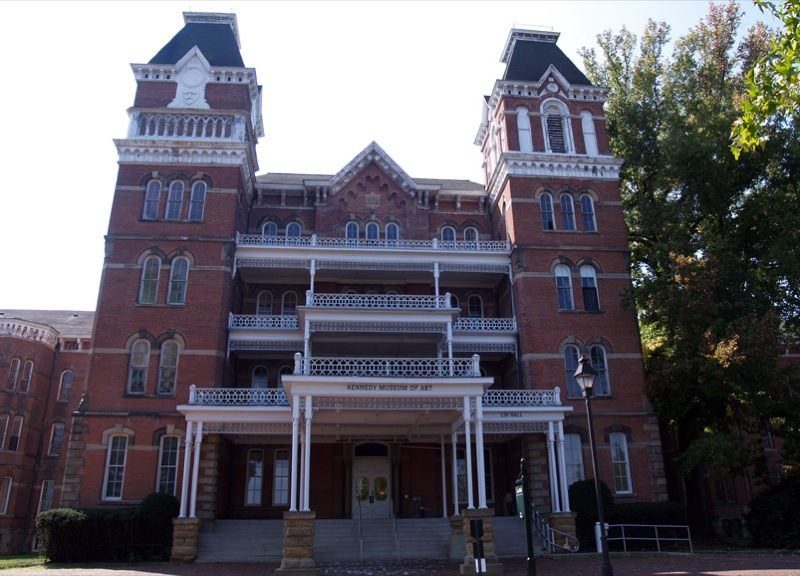 Part of the Athens Lunatic Asylum turned into the Kennedy Art Museum at Ohio University (photograph by Angela/Flickr)
Part of the Athens Lunatic Asylum turned into the Kennedy Art Museum at Ohio University (photograph by Angela/Flickr)
MARLBORO PSYCHIATRIC HOSPITAL
Marlboro Township, New Jersey
 Marlboro Psychiatric Hospital’s cemetery (photograph by Jackie/Flickr)
Marlboro Psychiatric Hospital’s cemetery (photograph by Jackie/Flickr)
The Marlboro Psychiatric Hospital in New Jersey started demolition last year, but out on a gravel road nearby are the leaning graves of its former patients. The institution opened in 1931 on 468 acres, and shuttered in 1998 after controversies over patient treatment which included some fatal food poisoning in the 1970s. In the cemetery, the patients are buried sequentially, with the oldest markers in stone, and the last in metal that is now rusting.
 Inside Marlboro Psychiatric Hospital before its demolition (photograph by kathryn/Flickr)
Inside Marlboro Psychiatric Hospital before its demolition (photograph by kathryn/Flickr)
LETCHWORTH VILLAGE
Rockland County, New York
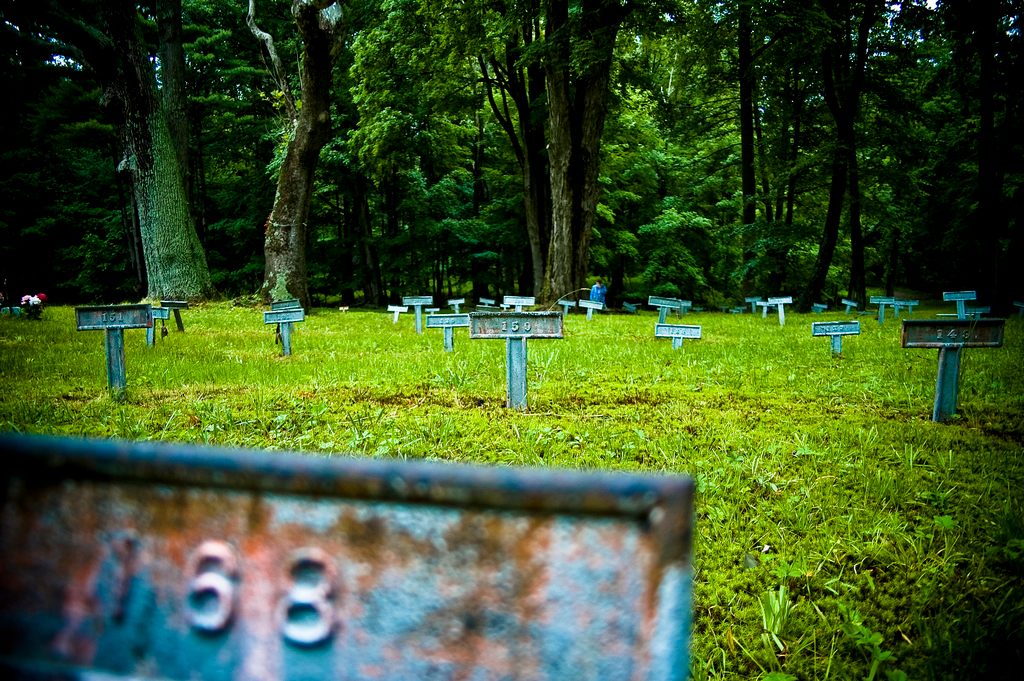 Letchworth Village Cemetery (photograph by George F/Flickr)
Letchworth Village Cemetery (photograph by George F/Flickr)
A memorial at the cemetery of the abandoned Letchworth Village in Rockland County, New York, reads: “Those Who Shall Not Be Forgotten.” T-shaped markers made of now-rusting metal are each embossed with a number, which according to Abandoned NYC, wasn’t just an act of simplicity or bureaucracy, but a way of hiding names due to family shame. Letchworth Village opened in 1911 as a residential facility for the disabled, both mentally and physically, but closed in 1996 after years of reported abuse and a lack of funding.
 Letchworth Village Cemetery (photograph by TheTurducken/Flickr)
Letchworth Village Cemetery (photograph by TheTurducken/Flickr)
 Letchworth Village in 2011 (photograph by Doug Kerr/Flickr)
Letchworth Village in 2011 (photograph by Doug Kerr/Flickr)
 Letchworth Village Cemetery grave marker (photograph by TheTurducken/Flickr)
Letchworth Village Cemetery grave marker (photograph by TheTurducken/Flickr)
FOREST HAVEN
Laurel, Maryland
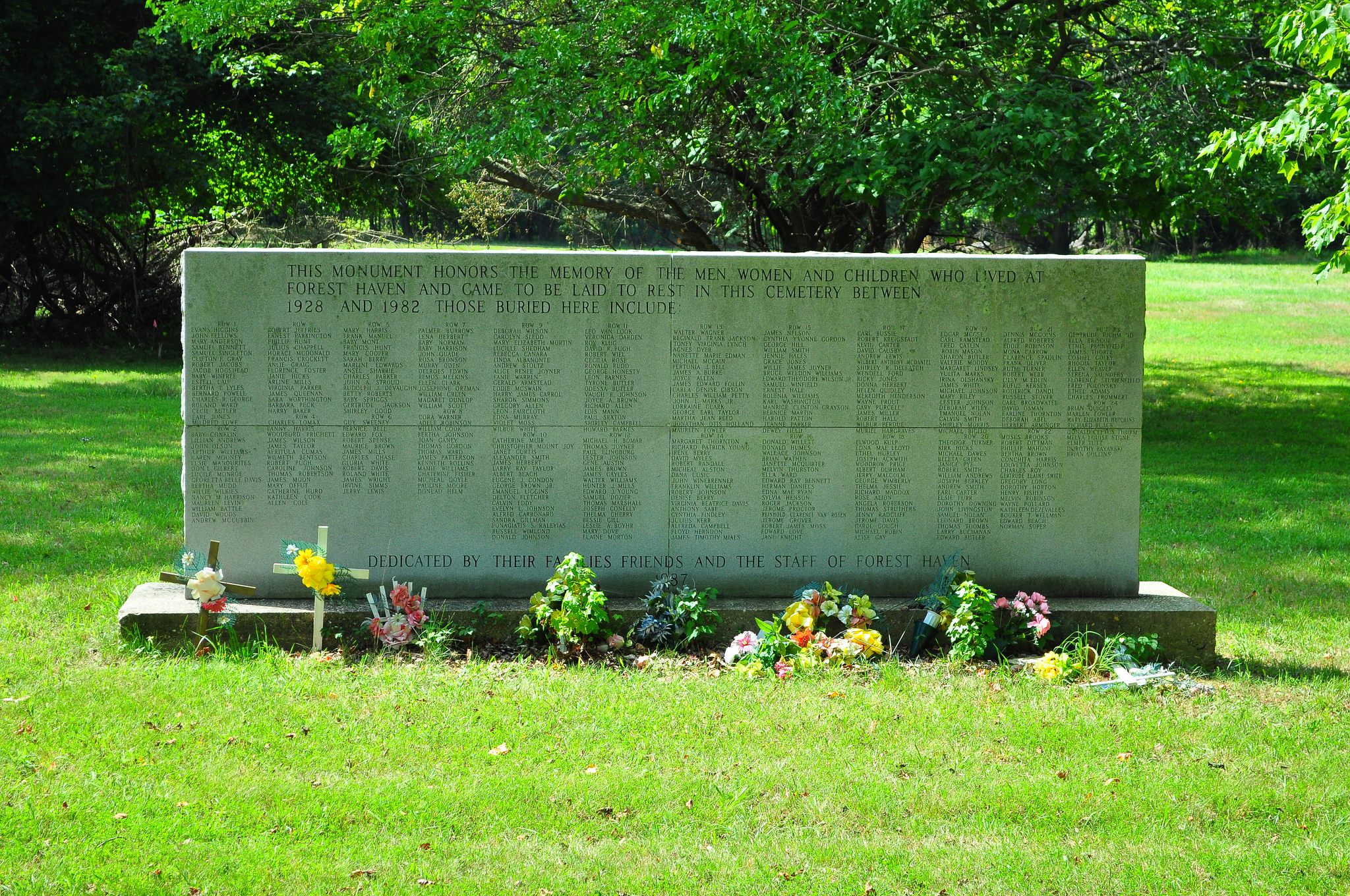 Forest Haven cemetery memorial (photograph by Jack Says Relax/Flickr)
Forest Haven cemetery memorial (photograph by Jack Says Relax/Flickr)
Before it shut down in 1991, the serenely-named Forest Haven had become synonymous with patient mistreatment and overcrowding. The Maryland institution opened in 1925 idealistically enough, adopting the work and community ethos of many of these asylums, but over the years never embraced new approaches to mental health treatment. Now abandoned, its 200 acre site includes the remains of a cemetery with an unclear number of dead, the graves of which have reportedly been repeatedly exposed due to erosion. One large granite marker dedicated by the families, friends, and staff of Forest Haven includes the names of as many who are known at rest beneath the shallow ground.
 Abandoned Forest Haven (photograph by Forsaken Fotos/Flickr)
Abandoned Forest Haven (photograph by Forsaken Fotos/Flickr)
 Abandoned Forest Haven (photograph by Forsaken Fotos/Flickr)
Abandoned Forest Haven (photograph by Forsaken Fotos/Flickr)


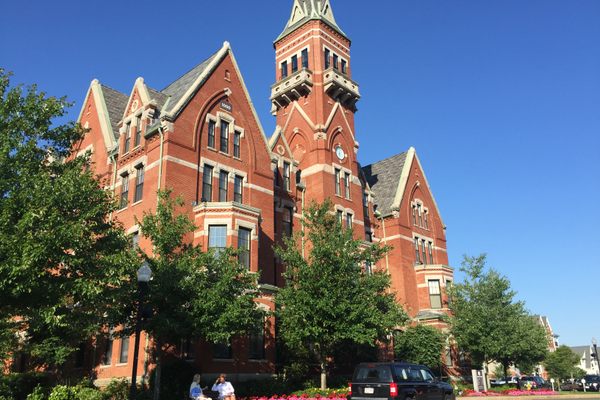









Follow us on Twitter to get the latest on the world's hidden wonders.
Like us on Facebook to get the latest on the world's hidden wonders.
Follow us on Twitter Like us on Facebook